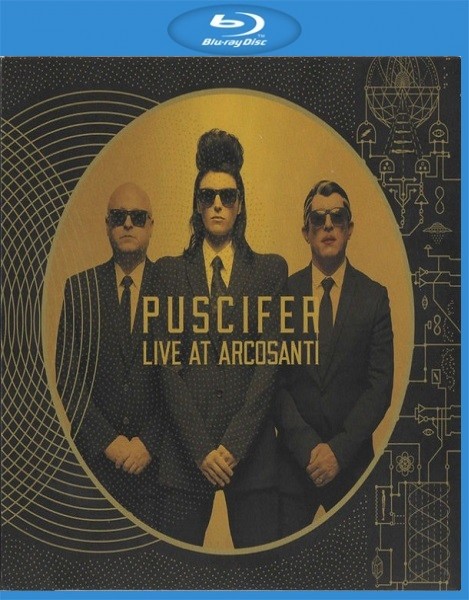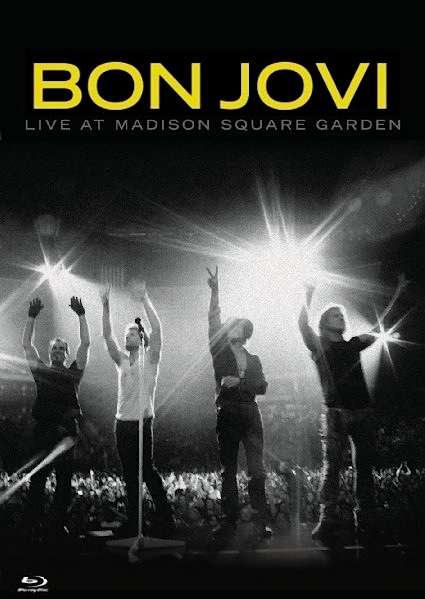![Sinfonia of London, John Wilson - Respighi: Roman Trilogy (2020) [Official Digital Download 24bit/96kHz] Download](https://imghd.xyz/images/2023/09/03/v0n7b8laz8l4b_600.jpg)
Sinfonia of London, John Wilson – Respighi: Roman Trilogy (2020)
FLAC (tracks) 24 bit/96 kHz | Time – 01:00:06 minutes | 1,01 GB | Genre: Classical
Studio Masters, Official Digital Download | Digital Booklet, Front Cover | © Chandos
Following the widespread critical acclaim of their first two recordings including a BBC Music Magazine Award John Wilson and the Sinfonia of London turn to Respighis Roman Trilogy for their third release. Born in Bologna in 1879, Respighi trained as a violinist and composer, and travelled extensively. His influences are therefore wide-ranging, from Richard Strauss and Debussy to Rimsky-Korsakov (who taught him orchestration) in addition to a love of and fascination with Plainsong and music of the Italian baroque. Fountains of Rome was the first of these three great tone poems, composed between 1913 and 1916, and inspired by a series of photographs given to him by the artist Edita Broglio.
The three brilliant symphonic poems that Respighi composed (inspired by his adopted city of Rome) were recorded in 1991 by the Philharmonia Orchestra under the direction of Yan Pascal Tortelier as part of his brilliant series of recordings for Chandos. It is now John Wilson, the new figurehead of the British label, who dares to take them on, continuing his intense work at the head of the Sinfonia of London (which he has recently helped to reform), an exceptional orchestra well-known to music lovers who are passionate about the somewhat hidden recordings of the 1950s. The orchestra brought together the capital’s best musicians at the time. Recently, Wilson and his orchestra put forward a beautiful album of rare French works including, for example, Duruflé’s Three Dances.
This recording opens with latest of the poems, Feste Romane (Roman Festivals), which has a concentrated, sharp style even though it uses a larger orchestra than the other two, including a large percussion section as well as an organ, a four-handed piano and a mandolin. First performed by the New York Philharmonic on February 21, 1929, under the direction of Arturo Toscanini, this work represents the “maximum of orchestral sonority and colour” in the composer’s own words. Surprisingly, the Feste Romane remains the part least known by the public. Its audacious orchestration is striking, showcasing Respighi’s inventive and sometimes rebellious spirit. After his appointment in 1913 as a professor of composition at the Conservatorio di Santa Cecilia in Rome, Respighi became friends with Edita Walterowna Broglio (1886-1977), a photographer whose creative work would become the source of inspiration for Fontane di Roma (Fountains of Rome), a poem composed over two years which was completed in September, 1916. Fontane di Roma testifies to a major stylistic turning point in the composer’s career, coming after works that clearly show the influence of the Russians and the modern French composers. Fontane di Roma is intensely colourful, personal and of unforgettable sensuality. With this first large-scale and hugely successful Roman symphonic poem, Respighi tightened his grip on the renewal of Italian instrumental music.
Completed in 1924, Pini di Roma (Pines of Rome), conducted by Toscanini for its first performance in New York on January 14, 1926, is the most famous part of the trilogy. Like the other two poems, Pini di Roma is divided into four parts, each of which evokes four iconic places in the Italian capital, such as the Janiculum Hill, Villa Borghese and of course the Via Appia, which inspired Respighi to compose a majestic and grandiose march, whose expressive power would go on to influence Hollywood composers. John Wilson brings us an effortlessly fluid version of the three poems which makes time fly! – Pierre-Yves Lascar
Tracklist:
01. Sinfonia of London & John Wilson – Feste Romane, P. 157: I. Circenses (04:16)
02. Sinfonia of London & John Wilson – Feste Romane, P. 157: II. Giubilio (06:30)
03. Sinfonia of London & John Wilson – Feste Romane, P. 157: III. L’Ottobrata (07:51)
04. Sinfonia of London & John Wilson – Feste Romane, P. 157: IV. La Befana (05:15)
05. Sinfonia of London & John Wilson – Fontane di Roma, P. 106: I. La fontana di Valle Giulia all’alba (04:16)
06. Sinfonia of London & John Wilson – Fontane di Roma, P. 106: II. La fontana del Tritone al mattino (02:23)
07. Sinfonia of London & John Wilson – Fontane di Roma, P. 106: III. La fontana di Trevi al meriggio (03:03)
08. Sinfonia of London & John Wilson – Fontane di Roma, P. 106: IV. La fontana di Villa Medici al tramonto (05:15)
09. Sinfonia of London & John Wilson – Pini di Roma, P. 141: I. I pini di Villa Borghese (02:39)
10. Sinfonia of London & John Wilson – Pini di Roma, P. 141: II. I pini presso una catacomba (06:39)
11. Sinfonia of London & John Wilson – Pini di Roma, P. 141: III. I pini del Gianicolo (06:43)
12. Sinfonia of London & John Wilson – Pini di Roma, P. 141: IV. I pini della Via Appia (05:11)
Download:
https://xubster.com/nqwsr37yt6iw/Sinf0nia0fL0nd0nJ0hnWils0nRespighiR0manTril0gy20202496.part2.rar.html
https://hexload.com/gsm5yq0xd9e5/Sinf0nia0fL0nd0nJ0hnWils0nRespighiR0manTril0gy20202496.part1.rar
https://hexload.com/n36rxkvfrfx8/Sinf0nia0fL0nd0nJ0hnWils0nRespighiR0manTril0gy20202496.part2.rar






![Sinfonia of London, John Wilson – John Ireland: Orchestral Works (2022) [Official Digital Download 24bit/96kHz]](https://imghd.xyz/images/2022/08/13/oq3ms5ayc73ga_600.jpg)
![Sinfonia of London & John Wilson – Bacewicz, Enescu, Ysaÿe: Music for Strings (2024) [Official Digital Download 24bit/96kHz]](https://imghd.xyz/images/2024/04/11/l5n3jlxre0zpc_600.jpg)
![Sinfonia of London, John Wilson – Ravel, Berkeley, Pounds: Orchestral Works (2024) [Official Digital Download 24bit/96kHz]](https://imghd.xyz/images/2024/02/12/hhohbjowj3kab_600.jpg)
![Sinfonia of London Chorus, Sinfonia of London & John Wilson – Ravel: Daphnis et Chloé (Complete Ballet) (2023) [Official Digital Download 24bit/96kHz]](https://imghd.xyz/images/2023/11/28/pgd4hu87ye08b_600.jpg)
![Sinfonia of London & John Wilson – Rodgers & Hammerstein’s Oklahoma! (Complete original score) (2023) [Official Digital Download 24bit/96kHz]](https://imghd.xyz/images/2023/10/03/ahhy9rqsydhfa_600.jpg)
![John Wilson – Rachmaninoff & Gershwin transcriptions by Earl Wild (2023) [Official Digital Download 24bit/96kHz]](https://imghd.xyz/images/2023/10/03/q7tzfkxy1gp3b_600.jpg)
![Martin Owen, BBC Philharmonic & John Wilson – Martin Owen Plays Strauss, Schumann & Weber (2023) [Official Digital Download 24bit/96kHz]](https://imghd.xyz/images/2023/09/11/qs08axtb0f92b_600.jpg)
![Sinfonia Of London, John Wilson – English Music for Strings (Britten – Bliss – Bridge – Berkeley) (2021) [Official Digital Download 24bit/96kHz]](https://imghd.xyz/images/2023/09/03/ijfnkjee0iyec_600.jpg)
![Sinfonia of London, John Wilson – Dutilleux: Le Loup & Other Works (2021) [Official Digital Download 24bit/96kHz]](https://imghd.xyz/images/2023/09/03/s4o96s2b0dpma_600.jpg)
![Sinfonia of London, John Wilson – Korngold: Works for Orchestra (2019) [Official Digital Download 24bit/96kHz]](https://imghd.xyz/images/2023/09/03/guulkzva9872b_600.jpg)
![Sinfonia of London, John Wilson – Escales: French Orchestral Works (2020) [Official Digital Download 24bit/96kHz]](https://imghd.xyz/images/2023/09/03/wq0ch54e6zfuc_600.jpg)
![Sinfonia of London, John Wilson – Ravel: Orchestral Works (2022) [Official Digital Download 24bit/96kHz]](https://imghd.xyz/images/2022/03/05/qgwouzs7imfrc_600.jpg)
![Sinfonia of London, John Wilson – Metamorphosen – R.Strauss; Korngold; Schrecker (2022) [Official Digital Download 24bit/96kHz]](https://imghd.xyz/images/2022/04/25/ordie5zm9ff7b_600.jpg)
![Sonora Slocum, John Wilson – Return (2019) [Official Digital Download 24bit/96kHz]](https://imghd.xyz/images/2023/08/25/yaed8aq8bxnya_600.jpg)
![Sinfonia Of London, John Wilson, Adam Walker – Kenneth Fuchs: Orchestral Works, Vol. 1 (2023) [Official Digital Download 24bit/96kHz]](https://imghd.xyz/images/2023/08/16/f4lmydumub7gb_600.jpg)
![BBC Philharmonic Orchestra & John Wilson – Coates: Orchestral Works, Vol. 3 (2023) [Official Digital Download 24bit/96kHz]](https://imghd.xyz/images/2023/07/01/c5q60ko13yhqc_600.jpg)
![Linda Richardson, Sinfonia of London & John Wilson – Italian Opera Arias (2021) [Official Digital Download 24bit/96kHz]](https://imghd.xyz/images/2023/05/26/jz8wd0icyr3ya_600.jpg)
![Sinfonia of London & John Wilson – Rachmaninoff: Symphony No. 2, Prelude in C# Minor (2023) [Official Digital Download 24bit/96kHz]](https://imghd.xyz/images/2023/04/25/s6fw127jlm8hb_600.jpg)
![Michael McHale, BBC Scottish Symphony Orchestra, John Wilson – Bennett: Orchestral Works, Vol. 4 (2020) [Official Digital Download 24bit/96kHz]](https://imghd.xyz/images/2023/03/27/b1btktliyilib_600.jpg)
![Sinfonia of London, John Wilson – Vaughan Williams, Howells, Delius, Elgar: Music for Strings (2023) [Official Digital Download 24bit/96kHz]](https://imghd.xyz/images/2023/03/01/rj9oqnzpiq2nc_600.jpg)
![Sinfonia of London & John Wilson – Rachmaninoff Symphony No. 3, Isle of the Dead, Vocalise (2022) [Official Digital Download 24bit/96kHz]](https://imghd.xyz/images/2022/12/22/zxgerjtuzj45a_600.jpg)
![John Wilson – Upon Further Reflection (2022) [Official Digital Download 24bit/96kHz]](https://imghd.xyz/images/2022/12/02/e8kz8nicugrjb_600.jpg)
![Sinfonia of London & John Wilson – Hollywood Soundstage (2022) [Official Digital Download 24bit/96kHz]](https://imghd.xyz/images/2022/11/01/nywe7wfv0pl0b_600.jpg)
![BBC Scottish Symphony Orchestra, John Wilson – Bennett: Orchestral Works, Vol. 3 (2019) [Official Digital Download 24bit/96kHz]](https://imghd.xyz/images/2022/08/25/GzacPCS.jpg)
![John Wilson, BBC Scottish Symphony Orchestra, Michael McHale – Bennett: Orchestral Works, Vol. 4 (2020) [Official Digital Download 24bit/96kHz]](https://imghd.xyz/images/2022/08/25/b1btktliyilib_600.jpg)
![BBC Philharmonic Orchestra, John Wilson – Orchestral Works, Volume 1 (2019) [Official Digital Download 24bit/96kHz]](https://imghd.xyz/images/2022/08/24/gvfv7favs0kob_600.jpg)
![BBC Philharmonic Orchestra, John Wilson – Copland: Orchestral Works, Vol. 4 (2018) [Official Digital Download 24bit/96kHz]](https://imghd.xyz/images/2022/08/24/g25eymf3qbzxc_600.jpg)
![John Wilson, BBC Philharmonic – Copland: Orchestral Works, Vol. 1 – Ballets (2016) [Official Digital Download 24bit/96kHz]](https://imghd.xyz/images/2022/08/24/tts2ae0s97ruc_600.jpg)
![Onyx Brass, John Wilson – Fanfares (2018) [Official Digital Download 24bit/96kHz]](https://imghd.xyz/images/2022/07/26/gpsv5p6nt6x6a_600.jpg)
![Andrew Haveron, John Wilson, RTE Concert Orchestra – Korngold: Violin Concerto & String Sextet (2020) [Official Digital Download 24bit/48kHz]](https://imghd.xyz/images/2022/06/19/q6l0s02ui7cab_600.jpg)